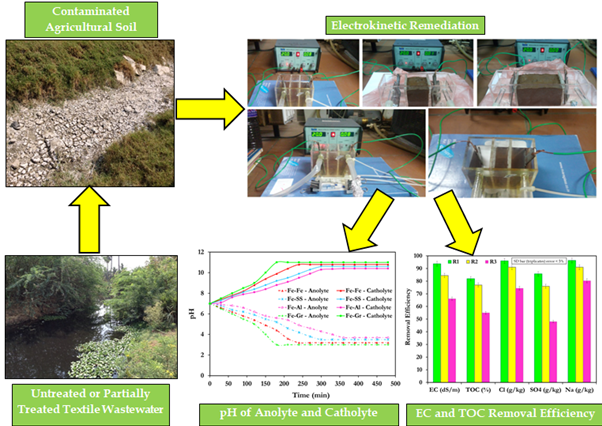
Soil contamination due to industrial activities is very common and discharging of partially treated or untreated textile wastewater into nearby environment in developing countries contaminated soils. The remediation of textile wastewater contaminated soils containing residual organic dyes and inorganic salts is risky. It is required to identify an economic and eco-friendly in-situ remediation technique for the textile wastewater contaminated soil. This paper investigates the effective removal of residual textile dyes and inorganic salts from the soil using electrokinetic remediation. Laboratory scale acrylic reactors were utilized and the soil was collected from the contaminated agricultural site. The experiment was optimized for different electrode combination (Iron-iron, Iron-stainless steel, Iron-aluminium, Iron-graphite), electrode distance (3 cm, 5.5 cm, and 10.5 cm) and electrical potential gradient (3V/cm, 4V/cm, and 5V/cm). Tap water was used as electrolytes in order to prevent further contamination during remediation process. An electroosmotic flow of 256 mL was observed at cathode reservoir for Iron-graphite electrodes and these electrodes removed 93% electrical conductivity and 82% of total organic carbon from soil. It is found that electroosmosis is the dominant mechanism by which residual textile dyes were removed. The proposed remediation technique is found efficient, economic and eco-friendly compared to the existing technologies.
Total file downloads: 14